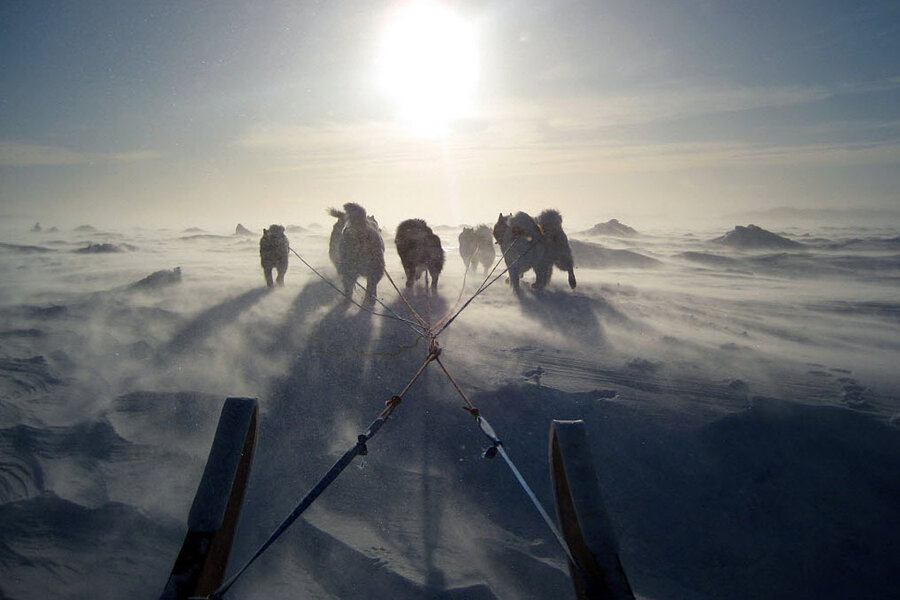The first Americans dawdled on Bering land bridge for 10,000 years, say scientists
Loading...
Ancient traces of willow, birch, and pollen extracted from beneath the Bering Strait's sea floor indicate that early Siberians may have spent ten glacial millenniums camping out near Alaska before migrating south to become the Americas' first human inhabitants.
It's not news that humans entered America by crossing ancient Beringia, the broad landmass that once connected modern-day Alaska with modern-day Siberia. But it never seemed likely that they would would have lingered there long, given the time and place – the edge of the Arctic Circle, in the throes of an ice age.
Sediment cores drilled from that now-submerged landmass, however, suggest that Beringian lowlands of the time may have been bustling with more warmth and life than previously imagined.
"It was an area where people could have had resources, lived and persisted through the last glacial maximum," said Dennis O'Rourke, an anthropological geneticist from the University of Utah, in a press release. "That may have been critical for the people to subsist because they would have had wood for construction and for fires. Otherwise, they would have had to use bone, which is difficult to burn."
Dr. O'Rourke told the Monitor that despite the dominance of glaciers during that period – which extended down through North America as far south as Ohio – summers in Beringia may have been no colder than Alaskan summers of today.
A column co-authored by O'Rourke and published in the Feb. 28 issue of Science combined these new paleontological findings with DNA comparisons of Native American and Asian populations. One study they cited of mitochondrial DNA – genetic information passed from mothers to their children – found that the genetic blueprint common to all Native Americans arose some 25,000 years ago, whereas glacial melting prevented those populations from entering the Americas until about 15,000 years ago.
"This result indicated that a substantial population existed somewhere, in isolation from the rest of Asia, while its genome differentiated from the parental Asian genome," O'Rourke says.
The discovery that Beringia contained "refugia," human-friendly ecological areas that sustained shrubs, trees, and animals, makes the region look like a likely site for this isolation.
"The archaeological record in Siberia indicated that as the climate got colder as the last glacial maximum began, people there began moving south," says O'Rourke, explaining one scenario for how Siberian and Beringian populations could have become definitively separated. "Those out on the land bridge could have become isolated" while the Siberians sought warmer climes.
What would have driven people to trek east across Beringia in the first place?
"The people who became the first North Americans followed the earlier movements of land mammals and plants," explains the US Department of the Interior, which runs a website dedicated to Beringian heritage. "Unlike later migrations from Europe to North America, these migrations were not conscious efforts to populate a new continent, but rather a simple pursuit of food and shelter – the basic necessities of life."
Much of the Beringian lowlands are now submerged, making it hard to find archaeological proof of this long human layover. But O'Rourke says the low-lying, marshy areas of Alaska would be good places to start looking for evidence of human habitation.








